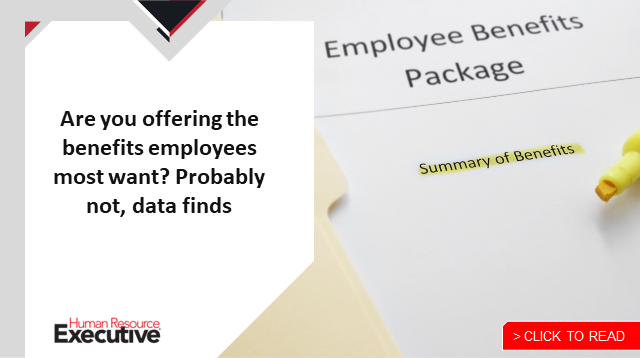Fueled by shrinking dollars and an eagerness to protect themselves against financial fragilities, employees are more interested in adding voluntary products to their mix of benefits in the coming year.
New research from financial services firm Voya finds that 63% of employees indicate that they are likely to participate in voluntary benefits offered by their employers—such as critical illness, hospital indemnity, disability income and accident insurance. That’s up from a year ago when 45% said they were interested. Interest is even greater among employees with children at home (76%), which is up from 52% last year.
“Most Americans don’t have to look very far to see the financial impacts of inflation,” says Andrew Frend, senior vice president of product and strategy for Voya’s health solutions business. “Add to the mix the fears of a looming recession, and Americans are looking for some relief to help stretch every hard-earned dollar.”
Indeed, previous Voya research found that nearly three-quarters of Americans (74%) are feeling more stressed about their financial situation due to inflation—which is even higher (66%) than in March of this year. Inflation has soared over the last year, leaving employees paying more for housing, gas, groceries and medical care. Industry analysts contend that certain benefits choices can help by providing financial support.
 “Voluntary benefits can help provide another layer of protection and typically cost less than what most people expect,” Frend says. While core workplace benefits like health insurance are important, he says, “even with medical coverage, most employees will likely still have out-of-pocket expenses. For example, if you need to go to the hospital for a medical emergency, your health insurance plan will typically cover a good portion of your costs. But as many learned from personal experience during the COVID-19 pandemic, it doesn’t always cover all the out-of-pocket expenses.”
“Voluntary benefits can help provide another layer of protection and typically cost less than what most people expect,” Frend says. While core workplace benefits like health insurance are important, he says, “even with medical coverage, most employees will likely still have out-of-pocket expenses. For example, if you need to go to the hospital for a medical emergency, your health insurance plan will typically cover a good portion of your costs. But as many learned from personal experience during the COVID-19 pandemic, it doesn’t always cover all the out-of-pocket expenses.”
Frend says critical illness insurance—which pays a lump-sum benefit upon the diagnosis of a covered illness or condition like a heart attack, cancer and stroke—has become increasingly popular. Industry research shows that while only a third of U.S. employers (32%) offer critical illness insurance to their employees, of those not offering this voluntary benefit, more than two in 10 employers (22%) are planning to offer it in the future. Interestingly, he notes, an increasing number of employers have started adding COVID-19 to their list of infectious diseases covered by their critical illness insurance.
Overall, there has been an increased interest in all benefits, particularly nontraditional benefits that aim to help employees’ financial situations, Frend says. Those include emergency savings support and student loan repayment.
The data is the latest to signal a shift in the benefits market and how employees perceive benefits. A confluence of events—like COVID-19, rising inflation and a tightened labor market—have caused employees to take notice of workplace offerings, be more aware of what their employers offer and be more willing to stay if they felt they had a comprehensive benefits package. Voya finds that half of the employees surveyed indicate they are more likely to stay with their current employer if they are offered access to voluntary benefits.
For employers and HR leaders, in particular, the Voya data signals the importance of offering an array of benefits to employees—and ones that go beyond basics like medical, dental and vision.
 That’s even more true in a hot job market, where employees increasingly say they are swayed by better salaries and benefits. Recent LIMRA research, for instance, revealed 60% of employers say they are considering adding a new insurance benefit within the next two years―roughly double the interest employers expressed five years ago. Consulting firm Mercer also reported that more than two-thirds of U.S. employers say they are looking to enhance their health and benefits offerings next year in order to attract and retain talent.
That’s even more true in a hot job market, where employees increasingly say they are swayed by better salaries and benefits. Recent LIMRA research, for instance, revealed 60% of employers say they are considering adding a new insurance benefit within the next two years―roughly double the interest employers expressed five years ago. Consulting firm Mercer also reported that more than two-thirds of U.S. employers say they are looking to enhance their health and benefits offerings next year in order to attract and retain talent.
“For HR and benefits leaders, if they want to remain an employer of choice in the future, they need to prioritize offering workplace benefits that their employees want and value in order to stay competitive,” Voya’s Frend says. “And it appears most employers are receiving this message loud and clear.”
Find out more about the hottest benefit trends at HRE’s upcoming Health & Benefits Leadership Conference, taking place in Las Vegas from May 3-5. Learn more and register here.
The post What’s behind the growing interest in voluntary benefits? appeared first on HR Executive.